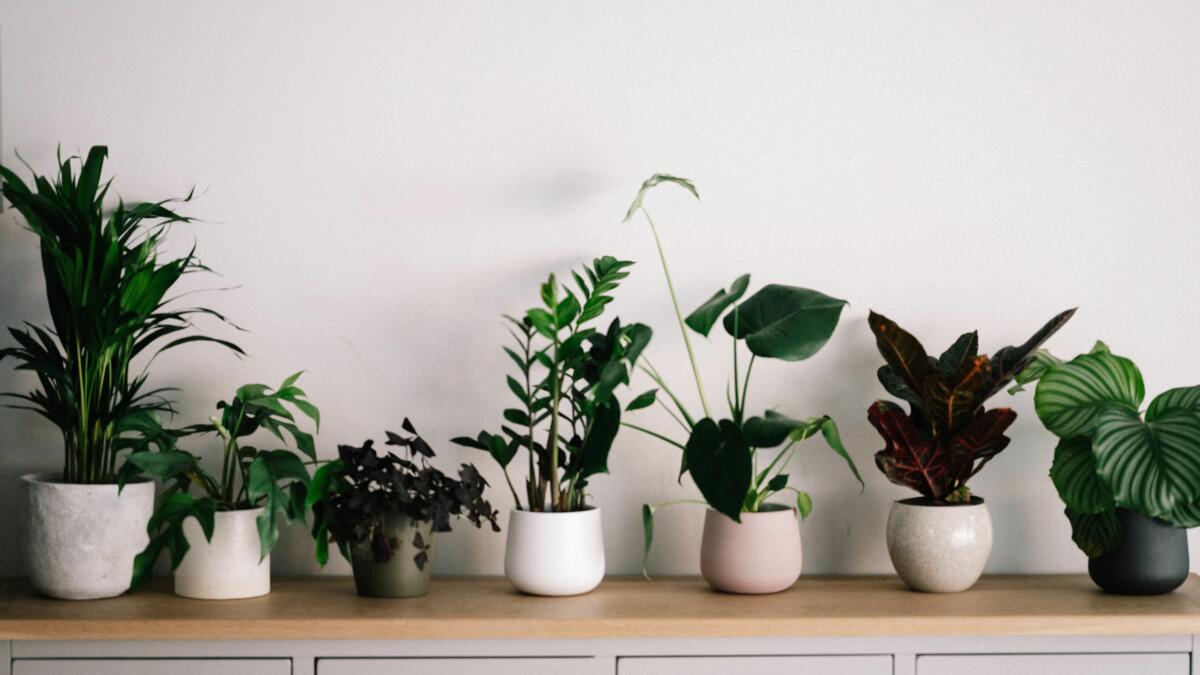Over the course of the pandemic, I feel like a lot of us developed new hobbies. Things to keep us distracted, joyful, and busy. A few of my friends got into building furniture, some started practicing photography or got really into knitting. Me? I took a stroll up to Greensgrow Farm in Fishtown one day and said, “Behold, this is now my entire personality.”
There’s something so spectacularly comforting about trying your best to encourage growth in a time when things feel so paused.
I made multiple trips while they were open and picked up plants and seeds from department stores when they closed for a spell (note: they are very much back in action and open!).
I dug around in dirt in my yard, found wild and exciting planters to hang around my house, and experimented with all kinds of succulents and indoor plants. Plants with big leaves and twisty vines, like pothos and philodendrons, plants that grew surprising tall, like ZZ (Zamioculcas zamiifolia) and snake plants. I even tried coffee plants, because why not. As I was already addicted to caffeine, and plants seemed to be the latest thing I was hooked on, combining the two just made sense.
I watched as some stuff died pretty quickly.
And outside, Philadelphia’s notorious chonky squirrels dug up various attempts at growing tomatoes, cucumbers, and the like. I feel like my frantic posts in the different local plant Facebook groups were notorious for giving away stuff I had completely given up on. If one of you are seeing this: Hey! It’s me! I’m still not great at this.
But I’ve learned a thing or two though. So as the weather warms and you’re venturing out to collect some plants for your home, or even your yard, here are some bits of advice that I hope will help you out.
Identify who is out to get your plants.
Listen, in the indoor plant game, some folks simply cannot be trusted. As you’re getting your space ready for splashes of green, consider: Is your floor prepared for splashes of dirt when your precious toddler decides that zebra plant is a prime target for their toy baseball? Is that gorgeous, hanging plant in a prime position to come crashing down, when Mittens, your cat, considers that basket a perfect sunbathing ledge? Selecting a location for your plants in your home, isn’t about where they will get the most sun, though that’s certainly important. It’s about considering how others will navigate them being in the space. Are your plants within reach, of those who are eager to destroy them? Is that potted plant near your door asking to be collided with when your dog hurries in after a walk in the rain?
Think about the people and animals around you on a daily basis, before choosing a location for your latest indoor plant.
Bonus Tip: Make sure you’re considering what indoor plants might be poisonous to your pets too. You might be surprised to find out that a lot of indoor plants can really harm your furry friends.
Will you forget there’s a plant here?
We talked a bit about the importance of placement when it comes to other people or adorable pets. But what about placement when it comes to you? You can barely remember to eat leftovers in the fridge, how are you going to remember to water a plant you’ve placed in a room you never go into?
I get it. A pothos full of lush vines will look AMAZING in a well-lit bathroom, and air plants look fantastic hanging in overly expensive brass containers on your home office desk.
But when you’re done taking a shower or closing out your email, are you thinking, “Now, I’m going to take care of all my plants here” or are you just eager to dry off and start your day or log off and end your day? If you’re the kind of person who wants to hurry and move on to the next thing, you might end up with some very dead plants in the places that they were supposed to make more beautiful.
If you’re gonna forget about the plant there, it shouldn’t go there.
Buy plant care tools you want to use.
Sure, you could water your plants using that old, chipped coffee mug you never really use… but that’s just it, isn’t it? You never use that mug. One thing that makes taking care of plants even more enjoyable and intuitive is, in my opinion, when you have tools you enjoy using. Such as: A pretty mister. A small, lovely watering can. Grow lights that you want to turn on. Sheers that look like art.
I quickly found myself drawn to about everything the folks at Modern Sprout make, but a quick trip to Greensgrow and Proper Goods in Fishtown offers up an absolute wealth of supplies you will want to use often, and even display in your home.
Research, research, research.
One of the earliest mistakes I made when jumping into trying to have houseplants and a proper garden was just buying anything and assuming as long as I put it in dirt, it would be fine and good to go.
It turns out, every plant is different and has varying needs.
While some plants thrive if neglected (much like myself, a Scorpio), others need specific kinds of water. Some plants need significant light, others not so much. Taking the time to figure out the needs of the plants you’re considering purchasing will prevent them from perishing because you gave them too much or too little water. It’ll let you know what kind of pots you should keep or what sort of soil you should plant them in.
Research prepares you to take care of your little green friends.
Trim regularly and learn to propagate.
Those plant care tools you took the time to carefully select? Don’t forget to, you know, use them. Trimming back your indoor plants is important – both for their health and also for safety reasons in your home. A terribly long vine might get stepped on, sending a pot hurtling your way. A succulent that’s gotten too gangly might break and get devoured by a pet that could get sick.
So, trim them back. And then, if the cuttings are healthy, think about propagating.
This is slightly advanced plant parent behavior, but it’s so easy and so much fun, especially if you’re trading plants in your community. Depending on the plant, you can potentially grow an entire extra plant from a cutting.
Now, there you have it. You’ve got some tips. You know where to find your plants, too. Now, don’t kill them.





